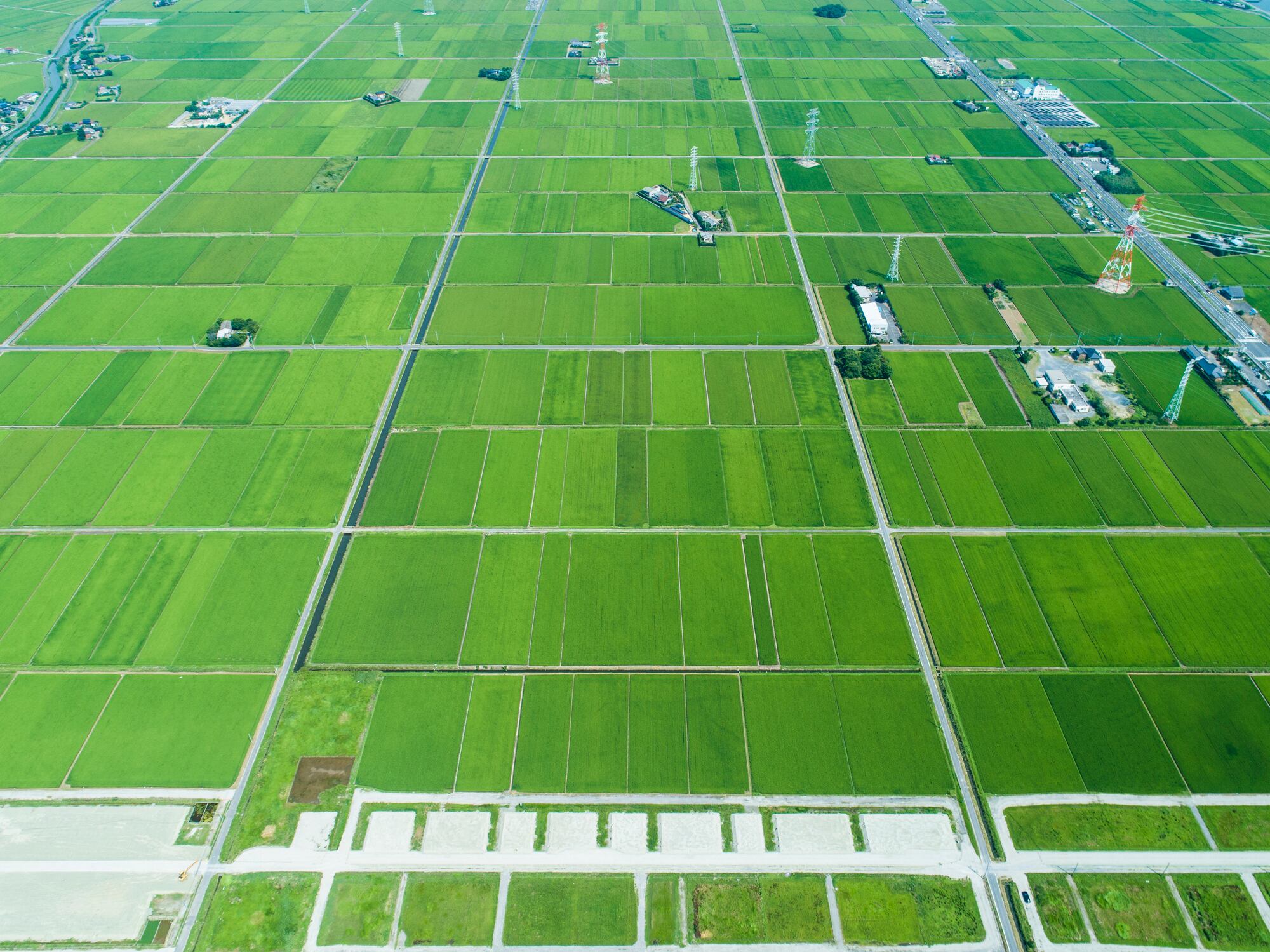Rice production is a major source of GHG emissions, contributing nearly half of all emissions from croplands worldwide. However, scientists and agricultural experts are now looking at hybrid rice as a potential game-changer in the fight against climate change.
The environmental impact of rice
Rice’s cultivation is a major contributor to global warming, with rice fields emitting large amounts of methane (CH4) due to the continuous flooding of paddies creating the anaerobic conditions needed for methane-producing microbes. Organic matter decomposing underwater in the absence of oxygen releases methane, which has a significantly higher global warming potential than carbon dioxide (CO2).
Additionally, nitrous oxide (N2O), another potent GHG, is released during intermittent flooding and nitrogen fertiliser application, whereupon nitrification and denitrification convert nitrogen into nitrous oxide released into the atmosphere.
Excessive fertiliser application and poor irrigation practices worsen this problem, making it crucial to adopt more sustainable nutrient management practices. Studies predict that without intervention, emissions from rice fields could rise by 35% to 60% by 2030. Implementing strategies to reduce flooding duration and improve soil aeration, for instance, can significantly reduce methane emissions.
Hybrid rice: A path to lower emissions
With this in mind, researchers at the International Rice Research Institute in the Philippines and the US Department of Agriculture (USDA) conducted a study on hybrid rice’s potential to help lower GHG emissions. They found that hybrid rice varieties indeed offered a promising solution, producing 19% fewer emissions compared to traditional inbred varieties while delivering up to 30% higher yields. This means farmers can produce more rice per hectare while reducing their environmental impact.
One reason for this reduction in emissions is hybrid rice’s improved root structure. Hybrids have larger, more efficient root systems that enhance oxygen transport to the soil, supporting methane breakdown before it reaches the atmosphere. Additionally, hybrid rice has a shorter growth duration, which means less time in flooded conditions, further reducing methane emissions.
Moreover, hybrid rice exhibits superior resilience to environmental stressors such as drought, heat, and soil degradation. These varieties require fewer inputs, including water and nitrogen fertilisers, thereby contributing to lower overall emissions. Their ability to adapt to different climate conditions makes them a sustainable choice for rice farmers looking to minimise their carbon footprint.
Irrigation and fertilisation strategies for emission reduction
Water and nutrient management are key factors in reducing emissions. Continuous flooding, a common practice in rice farming, creates ideal conditions for methane production. However, alternate wetting and drying (AWD) techniques can cut methane emissions by nearly 50% without reducing yield. Hybrid rice is particularly well-suited for AWD irrigation, as it performs better than inbred varieties under intermittent flooding.
AWD involves periodically draining rice fields to allow oxygen to penetrate the soil, thus disrupting methane production. This method not only reduces emissions but also conserves water, making it especially helpful for regions facing water scarcity. Additionally, farmers who adopt AWD can benefit from cost savings on irrigation expenses while maintaining healthy crop growth.
Fertilisation strategies also play a crucial role. Excessive nitrogen application leads to high nitrous oxide emissions. As they tend to be more nutrient-efficient, hybrid rice varieties require less nitrogen, thereby reducing emissions. Enhanced-efficiency fertilisers and precision application methods further contribute to minimizing the environmental footprint of rice farming.
Applying fertilisers in split doses rather than all at once can help improve nutrient uptake efficiency. Furthermore, incorporating organic amendments such as compost or biochar into the soil can enhance soil health and reduce dependency on synthetic fertilisers. These practices collectively contribute to lower GHG emissions while sustaining high rice yields.
Global adoption and future potential
Currently, hybrid rice is grown on approximately 15.5 million hectares worldwide, with projections indicating an increase to 23.6 million hectares by 2030. This expansion could result in significant reductions in global GHG emissions.
Countries like China, India, and the US have already begun integrating hybrid rice into their agricultural systems. Studies conducted in the US show that certain hybrid rice varieties emit significantly less methane than inbred varieties, particularly under AWD and furrow irrigation conditions.
In China, government-backed initiatives have promoted the widespread adoption of hybrid rice, leading to increased production efficiency and lower emissions. India has also seen a gradual shift toward hybrid varieties, driven by the need for higher yields and climate resilience. The growing recognition of hybrid rice as a sustainable solution has encouraged policymakers to support research and development efforts focused on improving these varieties.
Challenges and opportunities in hybrid rice development
Despite its potential, the adoption of hybrid rice faces some challenges. Farmers need access to high-quality hybrid seeds, training in new irrigation and fertilisation techniques, and government support for sustainable rice farming. Additionally, research is still needed to identify and develop hybrid rice varieties with the lowest possible emissions.
Advancements in technology could further accelerate the impact of hybrid rice on climate change mitigation. Scientists are exploring genetic modifications and breeding techniques to create even more efficient hybrid varieties. The use of artificial intelligence (AI) and machine learning is also gaining traction in optimising crop management and identifying the best combinations of irrigation, fertilization, and plant selection to minimize emissions.
Hybrid rice’s future potential
The integration of hybrid rice with sustainable farming practices can create a win-win scenario for farmers and the environment. With proper implementation, hybrid rice can help stabilize food security while significantly reducing agriculture’s contribution to climate change.
The researchers concluded: “Our current ability to disentangle the functional relationships between GHG emissions and soil microorganisms is made possible by advanced developments in molecular techniques for soil microbiology. This information could be instrumental in establishing novel and comprehensive mitigation strategies.
“To comprehensively understand the mechanisms and regulators involved in GHG emissions from rice fields, the best approach is to integrate all possible data from all main actors to extract a unique and realistic pattern, leading to the best and most optimised strategy for permanent reduction of the GHG emissions associated with rice production.”
Source: Plant Communications
“Advanced technologies for reducing greenhouse gas emissions from rice fields: Is hybrid rice the game changer?”
https://doi.org/10.1016/j.xplc.2024.101224
Authors: Seyed Mahdi Hosseiniyan Khatibi, et al.




